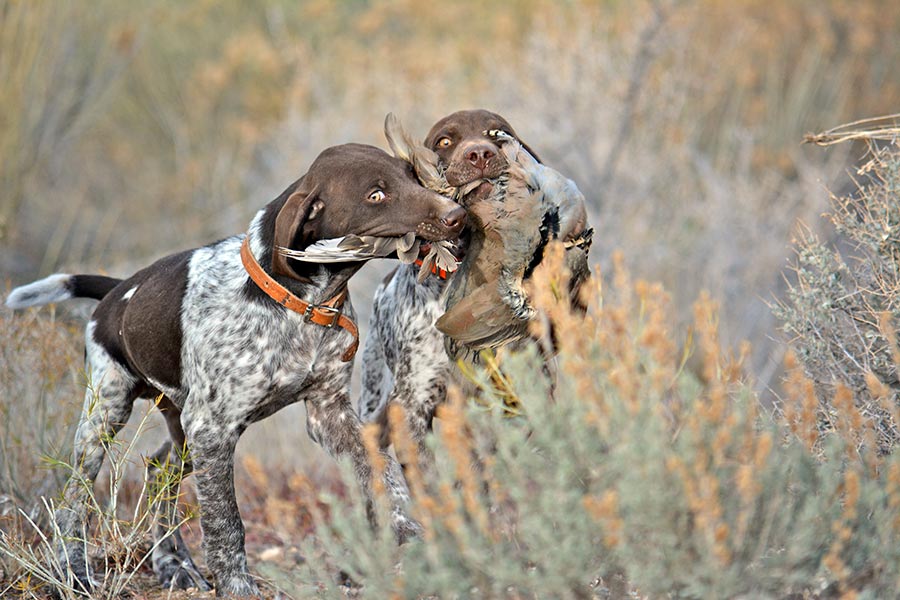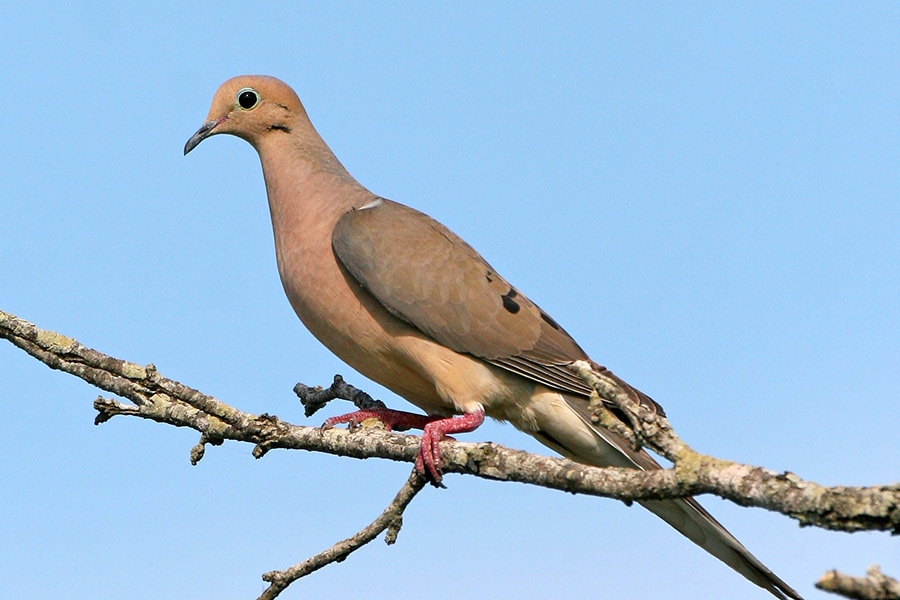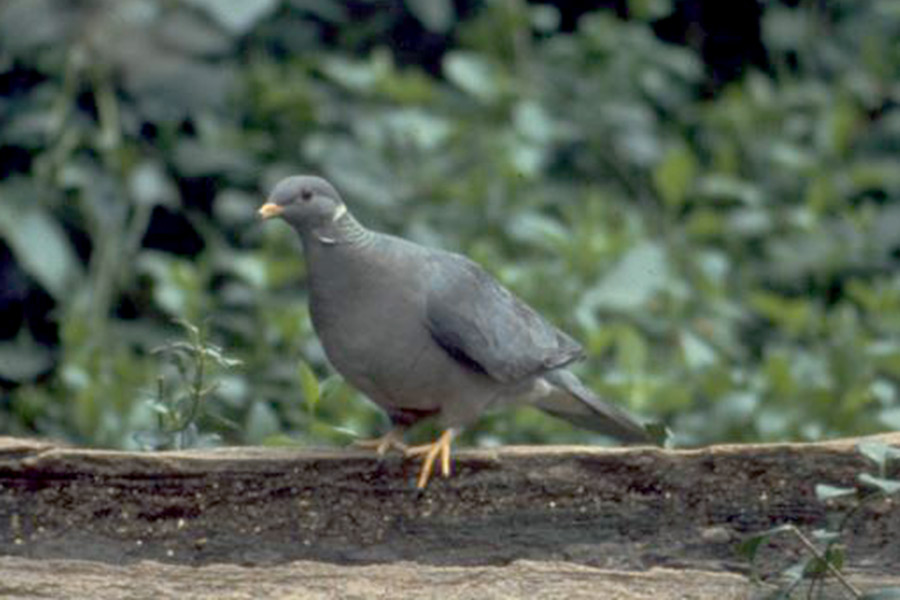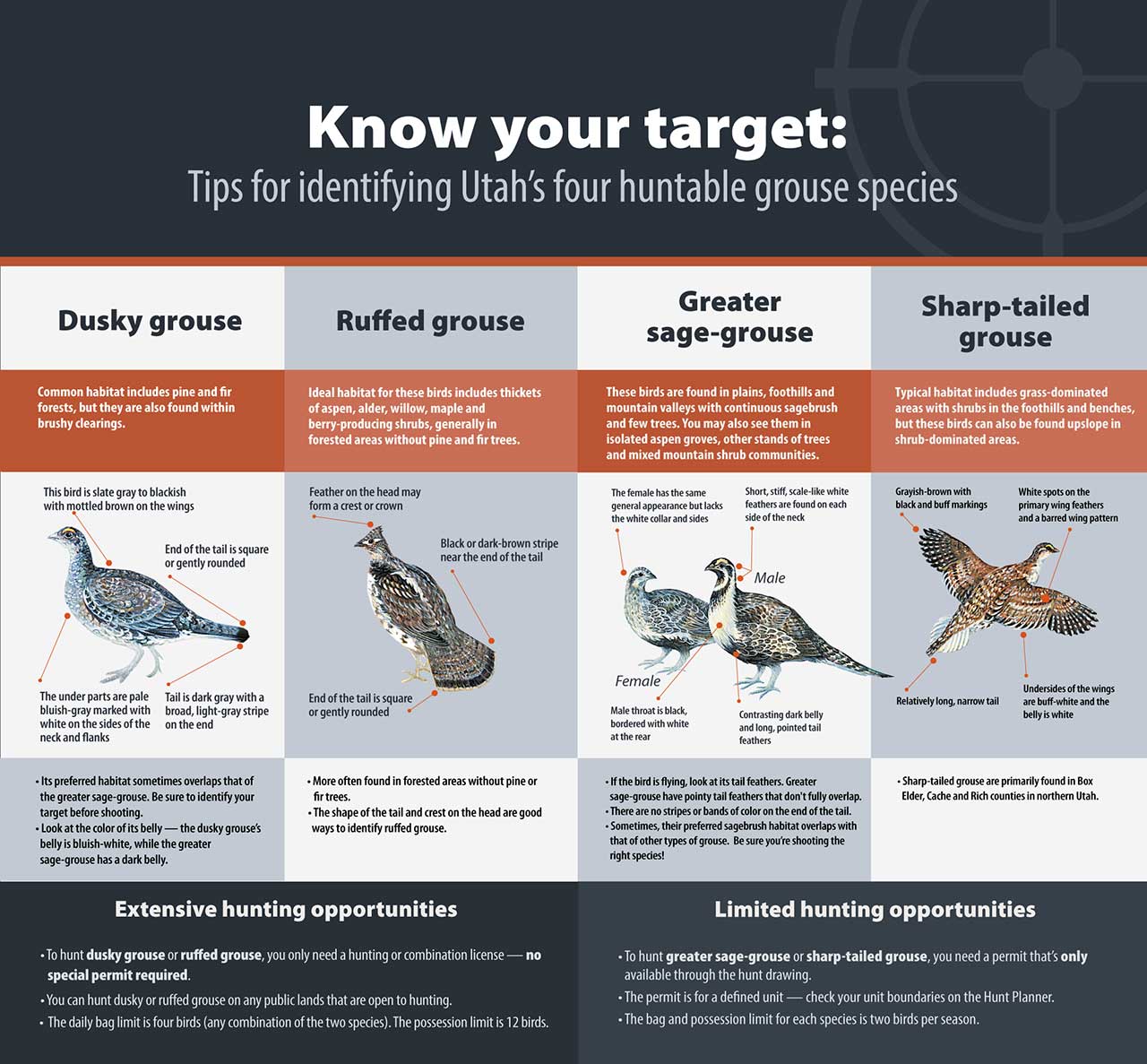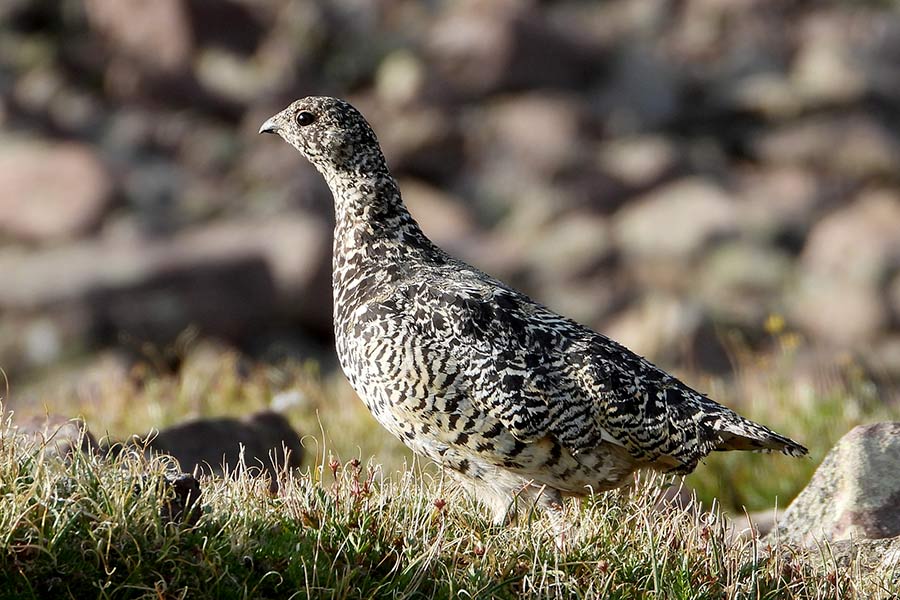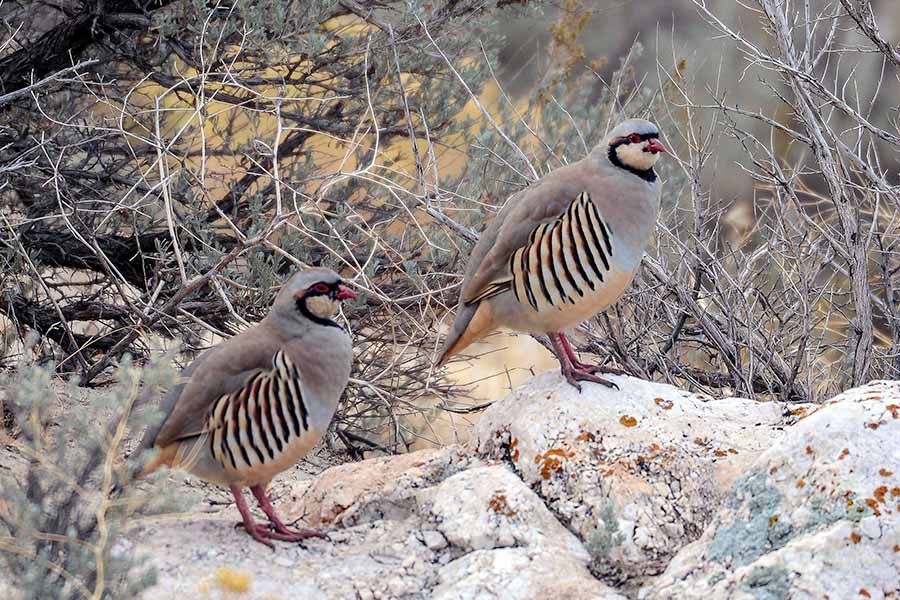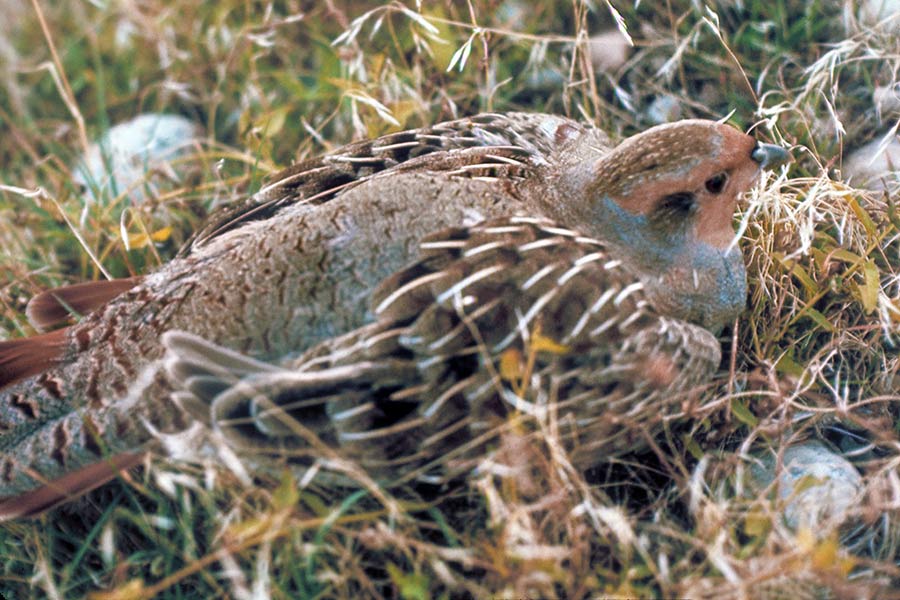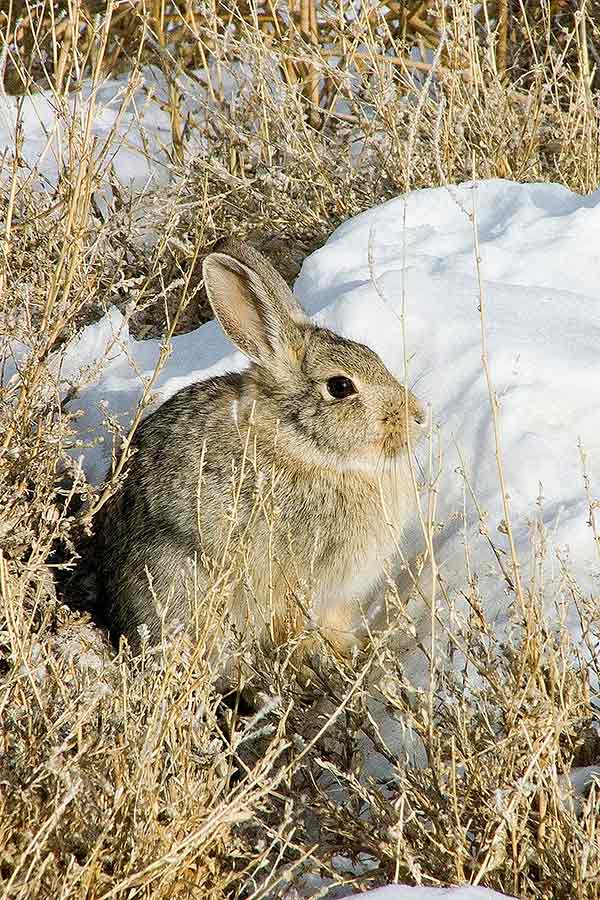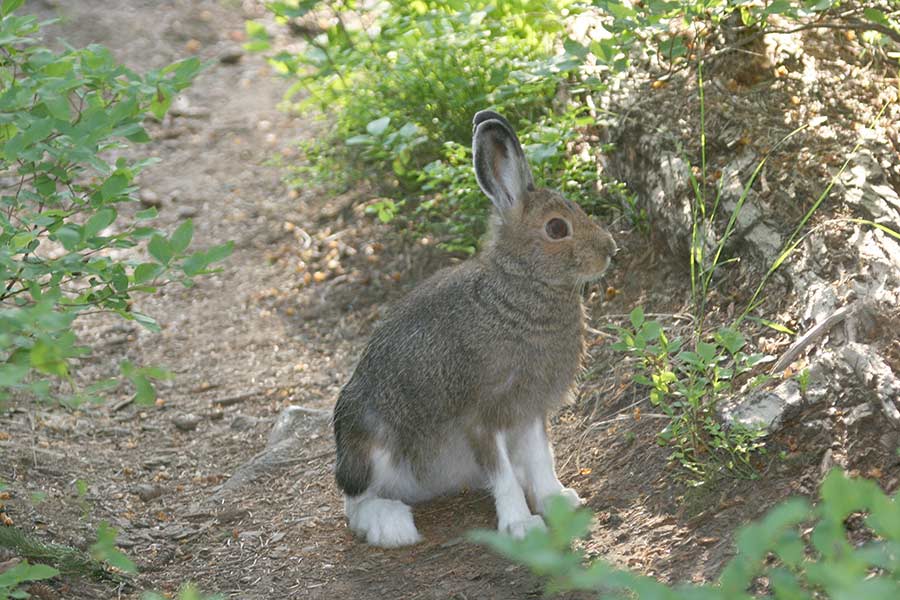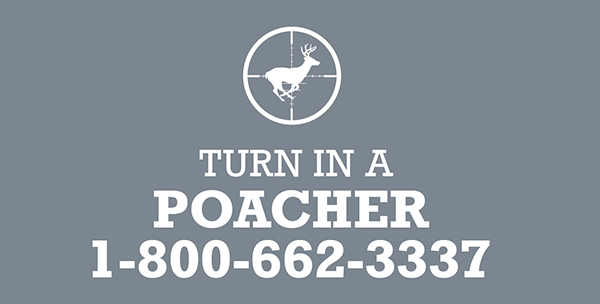What hunters should know about the 2025 Utah upland game and migratory game bird hunts
Salt Lake City — If you want to try hunting for the first time or if you are a seasoned hunter looking for a new opportunity, upland game and migratory game bird hunting is a great option! The majority of the upland game hunts in Utah are open to anyone with a Utah hunting license and don't require an additional permit.
Utah offers a variety of upland game species, including:
- Five different species of grouse
- Two species of partridge
- Cottontail rabbits
- Snowshoe hares
- Quail and pheasant (Hunting tips and population information about these two species will be released later this year, before their hunting seasons open.)
There are also several migratory dove and pigeon species in Utah available to hunt, including:
- Two species of doves
- Band-tailed pigeons
New this year, the migratory game birds formerly included in the Upland Game and Turkey Guidebook — American crow, bandtailed pigeon, mourning dove, sandhill crane and white-winged dove — are classified as "migratory game birds" in administrative rule. These and other migratory game birds (including ducks, geese, snipe, coots and tundra swan) are included in the 2025-26 Utah Waterfowl and Migratory Game Birds Guidebook where hunters can find permit information, field requirements and season dates.
The Utah Upland Game Management Plan was approved in 2022 to guide the management of upland game species in the state through 2032. It contains useful details about the behaviors and preferred habitats of many of Utah's upland game species as well as helpful resources, including distribution maps for hunters. Migratory game birds are protected under the Migratory Bird Treaty Act, and the regulations, season dates and bag limits are ultimately set by the U.S. Fish and Wildlife Service in conjunction with the harvest strategies of multiple states located within the Pacific Flyway.
Whether it's a long-standing family tradition or you just want to try a new hunting opportunity, here is a look at how Utah's upland game and migratory game bird populations are currently doing, along with some tips that will help you during the hunts this fall.
Doves (mourning and white-winged)
Mourning doves can often be found near agricultural grain fields (especially those with wheat and safflower) as well as areas with sunflowers because they provide a good food source for doves. Doves also need lots of water throughout the day, so hunting over water sources (including springs in sagebrush rangelands) and near feeding and roosting sites can help hunters find more doves.
If you want to hunt on private land, like on an agricultural field, you must obtain documented permission from the landowner in advance.
White-winged doves are more rare in Utah, but can occasionally be found in the southwestern areas of the state. Hunters should also keep an eye out for white-winged doves in the same areas as mourning doves. Hunters may also see collared-doves during their hunt. Collared-doves are not protected in Utah and can be hunted year-round without a license or a bag limit. Collared-doves can also be found near agricultural areas.
"The weather in late August and early September can affect how many birds will be seen during the hunt," Utah Division of Wildlife Resources Upland Game Coordinator Heather Talley said. "Doves tend to begin migrating south when nighttime temperatures drop into the 50s and as days get shorter, so hunters should plan to target them earlier in the season to increase their chances of success."
Here's what the dove numbers look like in each area of the state this year:
- Central Utah: Lower numbers of doves are being reported throughout central Utah compared to last year, due to dry conditions. This includes the Nebo, Wasatch West and Tooele hunting areas. The Tooele area offers some of the best mourning dove hunting in Utah, due to its many mountain ranges and vast expanses of public land. Hunters should scout areas prior to the hunting season, concentrating on watering holes and sunflower patches. Collared-doves can also be found in the Tooele and Wasatch West areas, near agricultural fields.
- Northern Utah: Dove numbers have been about average in Box Elder County this year and have decreased compared to last year in Cache and northern Rich counties. In Morgan and Davis counties — and in the southern portion of Rich County — dove numbers remain relatively high, with a slight decline from last year. A large number of doves reside on private land in eastern Box Elder County. Collared-doves outnumber mourning doves in many of the valleys in Cache and Rich counties. Although northern Utah has a large population of mourning doves, keep in mind that they migrate south for the winter, so the best hunting opportunities for that species will occur early in the hunting season.
- Northeastern Utah: Mourning dove numbers seem to have increased this year in northeastern Utah. If you target them before the fall migration, hunting should be above average. When hunting doves, keep an eye out for collared-doves in this part of the state, as well.
- Southeastern Utah: Dove numbers in the southeastern part of the state are stable and fairly comparable to last year. Hunters tend to have the best success hunting early in the season and in areas near irrigated fields or where there is an abundant population of sunflowers.
- Southern Utah: Dove numbers have remained stable since last year in Iron, Beaver and Millard counties, as well as in the Zion, Pine Valley, Southwest Desert and Paunsaugunt areas. However, their population numbers are still low in the Panguitch and Boulder Mountain areas, and hunting should be fair in the Monroe and Fish Lake areas. Hunters should be sure to target areas with food (agricultural fields and areas with sunflowers) and water sources to have success locating birds. Another good option is to hunt in wildlife management areas with this type of habitat. Hunters should take advantage of this opportunity early in the season, before the birds migrate.
Because mourning and white-winged doves are migratory game birds protected by federal law, you need a Harvest Information Program number to hunt them. Getting a HIP number is easy and only takes a few minutes. You can register for a free HIP number on the DWR website.
The hunting season for mourning and white-winged doves begins Sept. 1 and runs until Oct. 30. Find more information about hunting regulations in the 2025-26 Waterfowl and Migratory Game Birds Guidebook. For more tips on hunting doves, visit the DWR website.
Band-tailed pigeons
While DWR biologists don't do formal surveys for pigeons in Utah, the population has been relatively stable in recent years.
Look for band-tailed pigeons in southern Utah in areas with Gambel oak, aspen and spruce/fir trees. Due to recent precipitation, Gambel oak acorn production should be increasing in many parts of the state, which is typically what pigeons rely on for food in the fall.
"Many Utah hunters don't take the time to hunt band-tailed pigeons because they can be difficult to find due to their secretive nature," Talley said. "However, they can be a unique challenge and an interesting new opportunity for hunters who are willing to put in the time to find them."
Hunters should note that collared-doves and band-tailed pigeons are often mistaken for one another. Collared-doves are primarily located in agricultural areas, while band-tailed pigeons are typically found in forested areas. Visit the 2025-26 Waterfowl and Migratory Game Birds Guidebook for more details about identifying each species.
Hunting band-tailed pigeons does require a permit, but the permit is free and available on the DWR website. You also need a HIP number to hunt band-tailed pigeons. You can register for a free HIP number on the DWR website.
The pigeon hunting season runs from Sept. 1-14.
Grouse (dusky and ruffed)
There are several grouse species throughout Utah:
- Dusky grouse (also known as the blue grouse, pine hen, pine grouse and fool hen)
- Ruffed grouse (also known as forest grouse and willow grouse)
- Greater sage-grouse
- Sharp-tailed grouse
- White-tailed ptarmigan
To hunt either greater sage-grouse or sharp-tailed grouse, you need a special permit in addition to a hunting license, and the application period for those permits ended July 16. White-tailed ptarmigan also require an additional permit, which is available on the DWR website for free. However, you can still hunt dusky and ruffed grouse this fall with just a hunting or combination license.
Dusky grouse are about the size of a chicken and have drab brown and gray coloring. Their tail feathers are black except for the tips, which have a lighter gray color, and look like a wide band when the tail is fanned.
Ruffed grouse are gray and red and have a group of black feathers on the sides of their neck. Their tail feathers are the same color as their body, but have a dark black band near the end. Ruffed grouse can be found in stands of aspen, particularly young aspen. The aspen stands that also have shrubs with berries and a water source are the best places to spot a ruffed grouse. Hunters can also find ruffed grouse in mahogany patches.
For more tips on distinguishing between dusky and ruffed grouse, visit the Utah State University Extension website and the DWR website.
During fall and winter, grouse forage on the ground in areas where flowering plants (such as elderberry or serviceberry) or grains are available, and in areas dominated by thick sagebrush or in trees or shrubs with fruits and buds. Keep in mind that dusky grouse eat pine needles in the winter, and ruffed grouse eat buds from aspen trees. Hunting in areas with these food sources should bolster success later in the season.
"Hunters should locate berries for areas with good concentrations of forest grouse earlier in the year, but keep in mind that they will transition to aspen or pine needles later in the year," Talley said. "Dusky grouse migrate upslope as the season progresses and can be found in high-elevation spruce/fir forest areas by early October, while ruffed grouse will be found in aspen, with thick tree and shrub cover; they don't make large movements like dusky grouse do."
If you're able to hunt with a dog, the best time to hunt grouse is an hour or two after sunrise, while the birds have been feeding, so their scent is on the ground for your dog to track. If you hunt grouse without a dog, try early in the morning or late in the afternoon since that is when the birds are actively feeding and will be the most visible.
"People usually hunt grouse with dogs, but you will still want to move slowly and stop routinely to listen for birds. You may even be able to see them ducking behind brush as you pass," Talley said. "Sporadically stopping may cause the grouse to get nervous and flush if you are close to them. And when they flush, they will be gone in an instant, so be ready to shoulder your gun for a shot. Since grouse spend most of the day on the ground, you can still find them at any time during the day. This means you can still be successful if you are hunting without a dog during prime feeding times."
Due to differing moisture levels throughout the state over the last winter and spring, this year's reproduction has varied in different parts of the state. Here is what populations are looking like in each part of the state and where to look for grouse:
- Central Utah: Dusky grouse can be found in the Oquirrh, Stansbury, Sheeprock, Deep Creek, Nebo and Manti mountains, and their numbers seem to be higher this year due to healthy spring hatches. Forest grouse numbers in the Wasatch West Desert area are up from last year, as well. Ruffed grouse should be easier to find along river corridors and other habitat near water, while duskies will be at higher elevations on the edge of spruce/fir forests. The birds migrate upslope as the season progresses, and they can be found in high-elevation spruce/fir areas by early October. In Tooele and Juab counties, ruffed grouse numbers seem comparable to last year, and dusky grouse numbers appear higher than average this year.
- Northern Utah: Hunters should expect to see similar numbers of forest grouse in Cache County, northern Rich County and Box Elder County this year and should focus on finding dusky grouse in the Raft River Mountains in Box Elder County. Weber County has experienced a decline in forest grouse this year — while adult survival remained high, smaller brood sizes are likely the result of drier conditions compared to last year. Summit, Morgan, Davis, and southern Rich counties have also experienced drier conditions recently, despite the mild and wet winter. Forest grouse populations have likely declined in these areas. Sage-grouse lek numbers have increased again in Box Elder and Cache counties; however, brood sizes and success have decreased due to the recent hot, dry weather. Birds can be found throughout the western part of Box Elder County on private and public lands. Look in sagebrush stands, mixed with grasses and flowering plants, that are close to water sources. Sharp-tailed grouse have increased again in Box Elder and Cache counties as well — they reside mostly on private lands, so be sure to get documented permission before accessing private property. Ptarmigan are expected to have a slight increase in northern Utah this year. They can be found in high-elevation mountain areas in Summit County (in alpine habitat types) with treeless expanses of grasses, flowering plants, water and rock cover.
- Northeastern Utah: Sage-grouse numbers have increased slightly again this year in northeastern Utah — they are likely reaching the next peak in their population cycle, still trending upward. It has been dry since spring, so wet-meadow areas will be more productive areas to hunt. Forest grouse numbers seem about the same as last year — search for forest grouse in areas with water, aspen groves and berry-producing shrubs. Ptarmigan are also found in northeastern Utah in the Uinta Mountains, typically above the timberline. Areas with succulent green vegetation near water sources and dwarf willow patches mixed with boulders are great places to encounter ptarmigan.
- Southern Utah: Dusky grouse numbers are increasing in the Boulder Mountain area. Be sure to carefully identify grouse in the forests, as sage-grouse can also be found on the north and east slopes of the Griffin Top. However, there are very few ruffed grouse in that area. Hunters can find dusky grouse in the Zion, Pine Valley, Southwest Desert, Panguitch, Mt. Dutton and Paunsaugunt areas — the populations are stable to slightly increasing this year. The Beaver and Fillmore areas also both have healthy populations of dusky grouse. While dusky grouse dominate the Monroe and Fish Lake areas, there are also pockets of ruffed grouse in both hunting units. However, the large Monroe Canyon Fire will severely limit access and has impacted some habitat areas. The fire's impact on grouse on the Monroe hunting unit is still unknown, but has the potential to limit populations for the next few years. Sage-grouse have been trending upward on the Parker Mountain hunting unit, with another substantial increase in lek numbers this year. These birds can be found near water or where the greenest vegetation is available. Dusky grouse can be found along the sagebrush edge, so keep an eye out for that additional opportunity if you're hunting sage-grouse in this area.
- Southeastern Utah: Brood production was about average throughout most of southeastern Utah. Hunters should expect fair conditions due to drought and decreased brood sizes — look for dusky grouse in spruce/fir, and look for ruffed grouse in aspen habitats at high elevations across the region.
Hunters should look for ptarmigan in areas with succulent green vegetation near water sources and in high-elevation willow patches, especially at the base of rocky slopes. (Keep in mind that mountain willows are short bush-like plants that don't resemble the willow trees found in river corridors in the valleys.)
The dusky and ruffed grouse season runs from Sept. 1 to Dec. 31, and the ptarmigan season runs from Sept. 1 to Oct. 31. For more tips on hunting these species of grouse, visit the DWR website.
Partridge (chukar and gray)
Starting this year, the DWR will no longer be releasing pen-reared chukars, due to budget constraints. Here’s what hunters should know about chukar hunting in each area of the state:
- Central Utah: Overall chukar numbers seem to be up again this year in the Nebo and Manti areas, and there was higher brood production throughout the Wasatch area than in most other areas. The rocky slopes west of I-15 contain the highest densities of birds. Tooele County offers some of the best chukar hunting in Utah, with several populations in a variety of mountain ranges and lots of accessible public land. Tooele and Juab counties still have above-average chukar numbers in the West Desert this year, but not much production occurred.
- Northern Utah: Chukar hunting should be average to good in Box Elder County this year, with decent adult survival but low brood production/size. Hunters can also expect a decrease in birds in the western part of Cache County and on portions of the Bear River Mountain Range. Though adult survival has been favorable in these areas, the small brood sizes or lack of broods will result in an overall decrease of birds in this area.
- Northeastern Utah: This area of the state doesn't typically have a lot of chukar partridge. Typical chukar areas should produce good hunting again this year, but still below normal.
- Southern Utah: The Zion, Pine Valley and Southwest Desert areas have experienced declines in chukar populations this year, due to drought. The decreased precipitation in the winter and spring resulted in smaller and fewer broods in this part of the state. West Millard County has stable populations of chukars. Hunters can also typically find chukars in the mountain ranges in Washington, Sevier, Beaver and Millard counties, including the Oak Creek, Gray Hills, Little Drums, Crickets and House ranges. Chukars can also be located along the foothills both on the east and west sides of the Sevier Valley, and good brood numbers have been observed there this year, despite the warm, dry conditions. This should result in the same or better hunting than last year in that area.
- Southeastern Utah: Hunters can expect fair hunting this fall in southeastern Utah — popular places to hunt chukars are in cliff and rocky slope habitat along the Price and Green rivers as well as along the face of the Book Cliffs. However, this year's dry conditions have contributed to fewer and smaller broods this year. While overall population numbers are still below the peak of 10-15 years ago in this area, hunting conditions are slightly improving.
To locate chukars, hunters should focus on steep slopes with rocks and bunchgrass, sagebrush or cheatgrass, as well as areas with water. The best time to hunt chukars is early in the morning because that's when they feed and tend to be vocal, making them the easiest to find.
"If one of the birds spots you while the rest are feeding, it will call out to alert the others, helping you locate the rest of the group," Talley said. "You may increase your success rate hunting near water, but chukars aren't completely dependent on water, and rely on it even less as the season progresses. Once winter hits, hunt the south-facing slopes, where the sun will be melting snow and warming the rocks, making the area enticing for chukars."
Gray partridge (also known as Hungarian partridge) are only found in northern Utah:
- Northern Utah: Hungarian or gray partridge have decreased compared to last year, due to dry conditions. Though adult birds have been spotted in Box Elder County, few chicks are present. Gray partridge densities are usually higher in the eastern portion of the county on private land, so be sure to get documented permission from landowners before entering private land. There can be good opportunities on public land in the western part of the county as well. These birds can be found on private property in the western part of Cache County at the Bear River Mountain Range, on the Bud Phelps and Bear River Bottoms wildlife management areas, and on private property in the western part of Cache County.
Both partridge seasons will run from Sept. 27, 2025 to Feb. 15, 2026.
Cottontail rabbits
Cottontail rabbit population numbers are increasing, and they should be more abundant this year in most parts of the state. However, there are a few places with populations that have not yet rebounded from overly dry conditions or from the heavy snowfall in 2022-23.
Look for these rabbits in creek bottoms and washes, near thick sagebrush and willow trees. Cottontail rabbits can also be found near rocky outcroppings. Hunters should also try hunting early in the morning or late in the afternoon, when the rabbits are feeding.
Hunters should be able to find cottontail rabbits in the following areas:
- Central Utah: Cottontails have increased in this part of Utah. Check out possible hunting spots on the west side of the Manti area in brushy creek bottoms, in river corridors with willows and sagebrush in the Wasatch West area, and in low-elevation greasewood flats or in juniper sagebrush forests throughout the Tooele area.
- Northern Utah: Rabbit numbers appear to be rebounding in Box Elder and Summit counties. Morgan, Davis and southern Rich counties have about the same numbers as last year, but northern Rich and Cache counties are still experiencing lower rabbit numbers since the heavy winter of 2022-23. Search for rabbits in areas with dense sagebrush, with mixed grasses and flowering plants, close to water sources or in aspen-shrub habitat. They occur in larger numbers on private property in Morgan and Davis counties.
- Northeastern Utah: Numbers remain low, but have increased in this part of Utah over the past few years. The areas with the best rabbit habitat are producing decent numbers of cottontails, but overall, populations are less dense in northeastern Utah.
- Southern Utah: Overall, cottontail rabbit numbers seem to be still lower than average, but increasing in southern Utah. Fillmore, Beaver, Zion, Pine Valley and the Southwest Desert areas have experienced a slight increase in cottontails this year. In Fillmore, west Millard and Beaver counties, walk in brushy areas (near washes and along the edges of agricultural fields) to have success finding rabbits. On the Parker Mountain plateau, you can find rabbits in areas with thick brush and washes. You can find rabbits in thick brush in Black Canyon and John's Valley as well. The Monroe and Fish Lake hunting units have experienced a slight increase in cottontail numbers, as well; however, the Monroe Canyon Fire has detrimentally affected cottontail habitat.
- Southeastern Utah: Throughout southeastern Utah, rabbit populations have been incrementally increasing for several consecutive years. Hunting should be fair and slightly better in southeastern Utah than it was last year. Target thick shrub habitats when hunting in this region.
"Hunters also often have success finding cottontails in the transition areas between sagebrush and agricultural fields," Talley said.
If multiple hunters walk in a straight line with several yards between them, they're likely to find some rabbits feeding or resting. Be sure to walk slowly and quietly because cottontails have incredible hearing. Wearing hunter orange is highly recommended, since it won't hinder your hunt, and will make it easier for other hunters to spot you.
Small caliber rifles, such as .22 and .17, are great for rabbit hunting, or you can also use shotguns with No. 6 shot. (Many shotgun boxes display pictures of the targeted species on the box if you want to try different types of ammunition.) Note that some areas require lead-free ammunition, so be sure to look up restrictions before you head into the field. Find more cottontail rabbit hunting tips on the DWR website.
Hunters should also note that rabbit hemorrhagic disease has been confirmed in several wild rabbit populations in Utah since 2020. Specifically, it was found in cottontail rabbits in the Teasdale area of Wayne County, the Monticello area of San Juan County, Iron County, Duchesne County, Grand County, Kane County, Daggett County and in Uintah County. However, the disease doesn't appear to have eliminated the populations in those areas, and there hasn't been a confirmed case in Utah since 2024.
Infected wild rabbits may be lethargic and not flee when approached. If the rabbit you harvested seemed to act normally at the time of the hunt, it is unlikely that it has the disease. However, if you notice any discoloration or excessive bleeding on internal organs after harvesting the rabbit, or if you see anything that appears abnormal or causes concern, please contact your local DWR office and do not consume the rabbit, as a safety precaution.
The cottontail rabbit season runs from Sept. 1, 2025 to Feb. 28, 2026.
Snowshoe hares
Snowshoe hare populations are also low statewide, but are stable to slowly increasing over the last few years. Hares can be found in high-elevation forest areas with spruces/firs and aspen trees. The best habitat for hares is typically 8,000-9,000 feet in elevation and is more difficult to access than where cottontails are found.
Hunters should be able to find snowshoe hares in the following areas:
- Northern Utah: Summit County, in high elevations with lush vegetation and thick forest cover.
- Central Utah: In the Nebo, Wasatch, Tintic and Manti areas, along spruce/fir and aspen habitats. Young spruce/fir stands are especially optimal habitat for hares.
- Northeastern Utah: Found at 8,000 to 10,000 feet in remote areas with lush vegetation and thick forest cover — numbers appear to have increased this year.
- Southern Utah: In the Tushar Mountains, the Monroe and Fish Lake areas and a small population in the Boulder Top area.
While they are a brownish-gray color in the summer, snowshoe hares turn completely white in the winter, except for the black tips of their ears. The best strategy for finding hares is to wait for the first snowstorms of the year, and then look for the hare's unique tracks. Their track looks like a miniature snowshoe, hence their name. Snowshoes or snowmobiles are often essential if you want to hunt snowshoe hares after winter storms occur.
Snowshoe hares have a limited home range, so if you find an area that has plenty of tracks in it, there's a good chance a hare is hunkered down in some vegetation nearby. Move slowly through their habitat, watching for the outline of a hare and its dark black eyes. Kicking brush piles as you walk can also cause hiding hares to flush into the open.
Small-caliber rifles and shotguns are great firearms to use for hunting hares.
The snowshoe hare season runs from Sept. 1, 2025 to March 15, 2026.
Upland Game Slam
To add an extra challenge to your hunts this fall, consider participating in the Upland Game Slam. The slam encourages hunters to harvest a variety of upland game species, while generating money to help fund a variety of habitat and upland game-related projects.
Hunters complete a slam by harvesting the required amount of the target species. There are currently eight different slams that hunters can participate in. (One is for youth only.) Each one is designed to give you an extra challenge while you're hunting, as well as the opportunity to earn a commemorative, collectible coin. The entry fee is $20 for hunters 18 years of age or older, or $10 for hunters 17 years of age or younger. Learn more about how to participate in the Upland Game Slam on the DWR website.
Check the 2025-26 Upland Game and Turkey Guidebook for details on regulations for hunting each species, including the legal weapons for each upland game species. If you're hunting doves or band-tailed pigeons as part of a slam, you can find hunting regulations for those species in the 2025-26 Waterfowl and Migratory Game Birds Guidebook.
Youth hunts
The dates for this year's upland game youth hunts are as follows:
- Chukar and gray partridge: Sept. 20-22
- Quail: Oct. 25-27
- Pheasant: Oct. 25-30
The DWR and partners will also be holding several organized youth pheasant hunts in November in different areas of the state. Pheasants are released in areas across the state prior to their respective youth hunting seasons, as well as before the general hunting seasons. Visit the DWR website for more details about those upcoming events and for additional information about quail and pheasant hunting tips for this fall's hunts.


